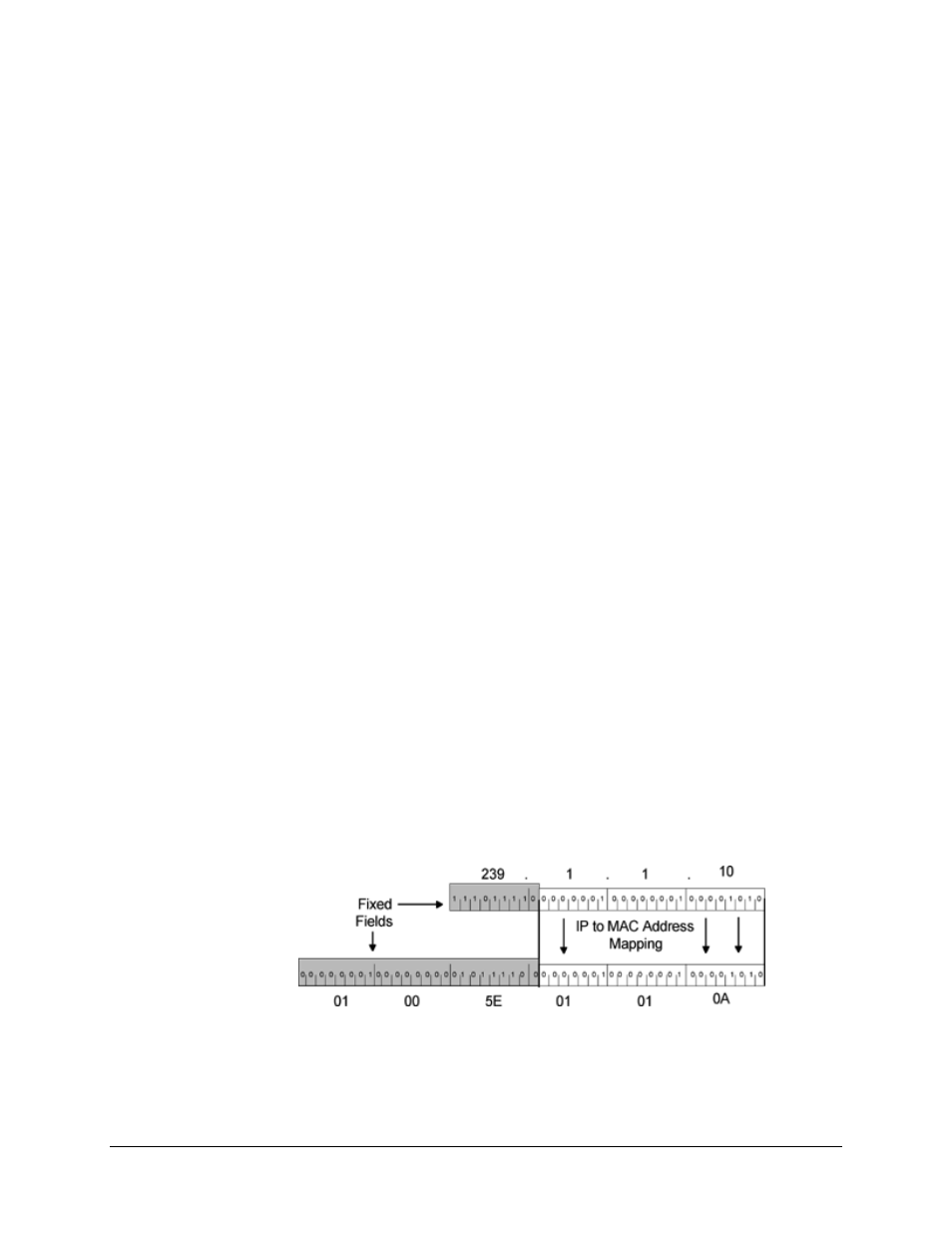B.2.2 multicast routing – Comtech EF Data CME-5000 Manual User Manual
Page 74

Digicast Micro Encapsulator (MENCAP)
Revision A
IP Routing Support
MN/MENCAPEDC.IOM
• IP Addresses, which fall into three classes, namely: A (0.0.0.0 to
127.255.255.255), B (128.0.0.0 to 191.255.255.255) and C (192.0.0.0 to
223.255.255.255).
• Medium Access Control (MAC) Addresses, which identify the destination
device (next-hop) to which the packets are sent. The least-significant bit of the
first byte of the six-byte MAC address is a ‘0’. For example, 0x00 11 22 33 44 55
is a Unicast address.
Unicast is supported by the MENCAP 50 as it would be in any routed network. A route is
created and a subnet mask is assigned to the route.
The MENCAP 50 uses Classless Inter-Domain Routing (CIDR) notation in which a
‘slash’ followed by a decimal number is used to represent the number of bits for the
mask, e.g. /32 is 255.255.255.255 and /24 is 255.255.255.0.
As stated previously, part of the route configuration is a MAC address that is assigned for
delivery of the packet when it is encapsulated into MPE. The MAC address typically
identifies the remote receiver (physical device); e.g. satellite terminal, DTV terminal, or
cable receiver.
B.2.2 Multicast
Routing
Multicast routing provides point-to-multipoint delivery of IP datagrams. Routes for
multicast IP packets are configured according to the following:
• IP Addresses, which fall into class D (224.0.0.0 to 239.255.255.255)
• Medium Access Control (MAC) Addresses, which identify the frames as
multicast. The least-significant bit of the first byte of the six-byte MAC address
is a ‘1’. For example, 0x01 00 5E 00 00 01 is a multicast address.
• Broadcast frames are identified by the MAC Address, 0x FF FF FF FF FF FF.
Multicast IP addresses are related to multicast MAC addresses as follows:
• The lower 23 bits of the IP address are mapped into the lower 23 bits of the MAC
address.
Figure B-1. Multicast Mapping (IP to MAC)
B-2